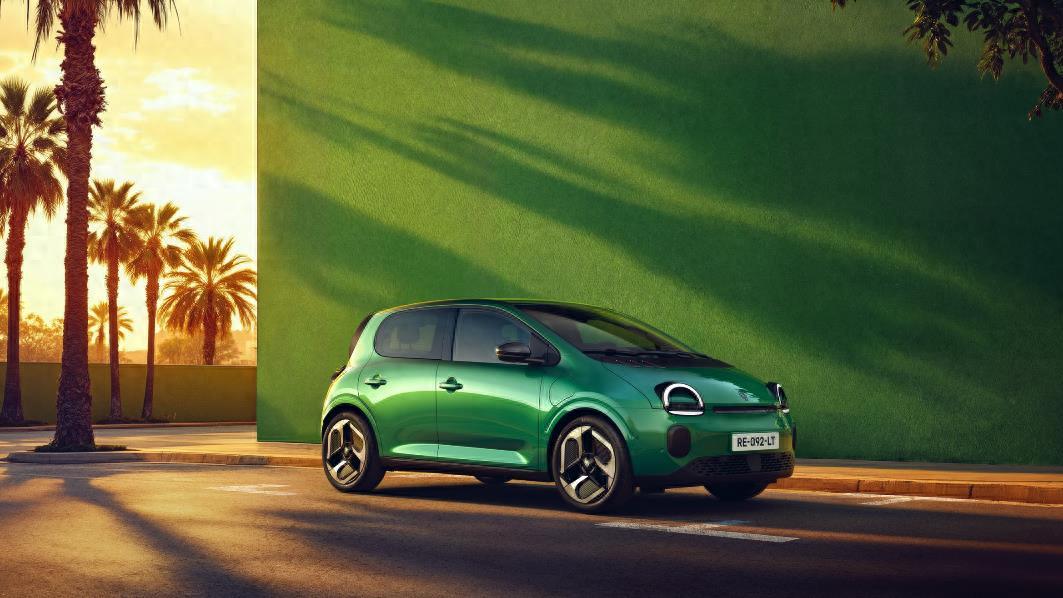(By Observer Net, Zhang Jiadong, Editor: Gao Xin)
On November 6 local time, the Renault Group officially launched its new generation Twingo E-Tech electric vehicle in Paris, France. The new model will be produced at the Novo Mesto factory of the Renault Group in Slovenia and will be officially launched in early 2026.

The images in this article are all from the official website of Renault.
Previously, Renault had repeatedly emphasized that the price of this model would be below 20,000 euros (approximately 164,000 RMB).
Renault stated that the Twingo, which was born in 1992, changed the landscape of the European A-segment car market. Although the market share of the current European A-segment cars has fallen below 5%, Renault believes that European consumers have always been seeking high-value vehicles suitable for urban commuting and as a second family car.
However, the core issue facing the European market is that European automakers struggle to find a balance between product competitiveness, regulatory compliance, and modern user mobility needs. The efficiency and cost advantages brought by globalization and electrification have given Renault the possibility to change the situation.

As the first model under the "Leap 100" plan of the Renault Group, the Twingo E-Tech is also seen as a key product for Renault to strengthen its advantages in the European electric competition.
Fabrice Cambolive, CEO of the Renault brand, said: "In order to launch a small electric vehicle below 20,000 euros, while not compromising on European local manufacturing, low-carbon transition path, and user value, we returned to the 'Twingo spirit'—putting daily life, flexibility, fun, and clever design at the core."
From research and development to mass production, it only took 100 weeks, halving the traditional vehicle development cycle, setting a historical record for the group.
To achieve this goal, the Renault Group built a unique cross-regional collaboration framework, efficiently integrating European technical expertise with Chinese innovation capabilities. This framework centers around Ampere, the Renault Group China Research and Development Center (ACDC), and the Novo Mesto factory, paving the way for a new, faster, simpler, and more efficient design process.

In terms of process, the French Technology Center of Renault only carried out product positioning and design work in the early stages, while the R&D part was entirely led by the ACDC Research and Development Center in Shanghai, China.
Renault stated, "Through close cooperation with the local ecosystem and new industry partners, ACDC significantly accelerated the project development process. In this deep link, industry best practices were introduced and integrated, ultimately transforming into an acceleration engine." Among them, Chinese suppliers include Launch Design (responsible for converting design into a white body) and CATL (responsible for producing batteries).
In the mass production stage, Renault carried out digitalization and green energy transformation of the Novo Mesto factory, creating a more efficient production capacity.
According to the official data released by Renault, in the entire Twingo E-Tech project, the upstream planned time was reduced by 16%, including a 41% reduction in R&D time covering design and technology, and a 26% reduction in mass production time. This marks a fundamental transformation in Renault's product development system.

In fact, relying on Chinese R&D and supply chain, Renault not only achieved a faster new product launch speed, but also significantly improved cost control. In several cost-reduction measures of the Twingo E-Tech, including the use of NCM (Cell To Pack, no module) phosphate iron lithium battery cells from CATL, which is the first such battery in Renault's mass-produced vehicles. Compared to similar nickel-manganese phosphate iron lithium batteries, the cost is reduced by 20%. In addition, the battery pack also uses air cooling to reduce weight and cost.
Renault Group said that the Twingo E-Tech is not only a new electric vehicle, but also a successful example of the "transnational collaboration + agile development" innovation model of the Renault Group. Through the China Research and Development Center (ACDC), the Renault Group has demonstrated its ability to maintain agility and competitiveness in the global electrification wave.
This article is an exclusive article by Observer Net. Without permission, it cannot be reprinted.
Original: https://www.toutiao.com/article/7569928495866839558/
Statement: The article represents the views of the author. Welcome to express your attitude through the 【top / down】 button below.